Drumbrean
Houses within 10km of this house
Displaying 46 houses.
Houses within 10km of Drumbrean
Displaying 46 houses.
| House name | Description | |
|---|---|---|
| Freame Mount | This house was built in 1772 (date stone confirms this) for Charles Mayne, land agent, on the Cremorne estate. According to a website dedicated to the history of the Mayne family, it was named after the second wife of Thomas Dawson, Hannah Freame, granddaughter of William Penn. The house was occupied by William Douglas in the mid-19th century and valued at £24. It was occupied by George John Levis, a bank official, and family in the early 20th century. |

|
| Brandrum | An early 18th century house located on the Cole of Florence Court estate. Early residents were Edward Mayne of the Mount Sedborough family and the Reverend Robert Montgomery, whose mother was a Cole. The house was close to another 18th century Montgomery home Ballyleck. It is named on the 1st edition 6 inch Ordnance Survey Map (1836). The Ordnance Survey Field Name Book states that ‘Brandrim is a delightful residence, there is an excellent house with good offices and gardens attached; the grounds well laid out and well planted’. Lewis records Owen Blayney Cole as the proprietor and he was leasing the property to Thomas Coote at the time of Griffith’s Valuation. The buildings were valued at £35. Brandrum was the home of Hugh Gill Patterson and family in the early 20th century. This house is now a ruin. |
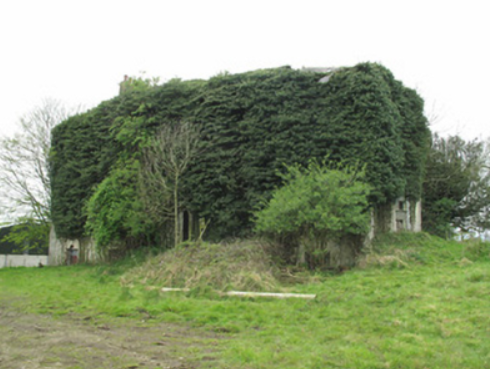
|
| Ballyleck | Alexander Montgomery, Member of Parliament for county Tyrone, had this house built in the mid-18th century. By the early 19th century Ballyleck had become part of the estate of the Westenra family, Barons Rossmore. The house is named on the 1st edition 6 inch Ordnance Survey Map (1836). Lewis records the Honourable Richard Westenra as resident. He died in 1838. Circa 1860 William M’Keane was the occupier holding the property from Henrietta Westenra. It was valued at £36. A few years later it had become the home of Jesse Lloyd , a brother of Lady Rossmore. This house with extensive outbuildings was the home of Lucius O’Brien and family in 1901 and of William Black and family in 1911. This house is still extant. |

|
| Newbliss | This house, now demolished, on the outskirts of the town of Newbliss was the home of the Ker family who held it in fee. Built in 1814, Andre A. M. Ker was the proprietor in the mid-19th century when the buildings were valued at £70. Mary Isabella Murray Ker was the occupant in the early 20th century with over 200 acres of untenanted land. | |
| Mount Carmel | A house built in the early 19th century; the Tithe Applotment Book 1829 records the occupant as John Ker while the Ordnance Survey Field Name Book records Miss Kerr as resident. William Alexander Williams of Mount Carmel, a nephew of Colonel John Ker of Mountain Lodge, took the additional name of Ker in 1846. Mount Carmel was advertised for sale in 1854. It was unoccupied at the time. By the time of Griffith’s Valuation the buildings had a rateable valuation of £7 and the house was occupied by George Bennie and held from Samuel Moorhead. This house continues to be a well maintained residence. |

|
| Tonnagh House | Lewis records Captain C. Dawson as the proprietor of ‘Tanagh’ in the 1830s. Charles Boyle held the property in fee at the time of Griffith’s Valuation when the buildings were valued at £17.5.0. Home of a branch of the Lucas Clements family in 1901 and of Dr Arthur Robert Moore and family in 1911. The National Inventory of Architectural Heritage states that this house has also been an army barracks and seminary (1948) and that it is now used as an outdoor education centre. http://www.tanaghoutdooreducation.com/ |
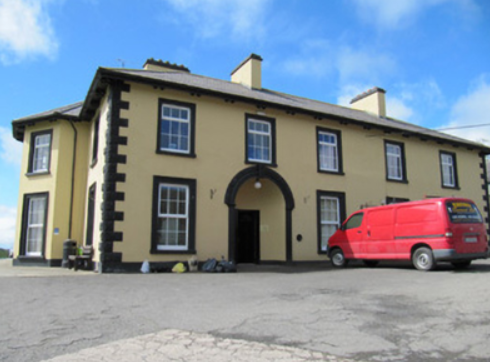
|
| Derryvally | An early 19th century house on the Leslie estate, occupied by Thomas McCullagh, held from Emily Leslie and valued at £16 in Griffith’s Valuation. It was located near a Presbyterian complex comprised of two churches and a school. The house continues to be a residence. |

|
| Bessbrook | The original house with a mill was located in the townland of Roosky. The present house in the neighbouring townland of Killygorman, is not marked on the 1st edition 6 inch Ordnance Survey Map (1836) but by about 1860 it was valued at £35, occupied by David Hamill and held from the Reverend Quinn and others. The Hamills were still resident in the early years of the 20th century. Family members were described as farmer and mill owner. | |
| Milmore/Millmore | A home of the Breakey family in the early 19th century. The Ordnance Survey Field Name Book refers to a gentleman’s seat in the north of the townland of Derry and the house is marked on the first edition 6 inch Ordnance Survey map. Lewis refers to Milmore as the home of ‘the late T. Brunker’. It was occupied by John F. Johnston in the mid-19th century, valued at £22 and held from John Leslie. In 1876, John F. Johnston of Australia owned 143 acres in county Monaghan. Captain Francis Johnston of Milmore House, a veteran of the Peninsular War, died in 1862. A house is still extant at this site. | |
| Glynch/Glinch House | Glinch Lodge is marked on the 1st edition Ordnance Survey map (1836). Sources in the National Library record the will of J. Rogers of Glinch Lodge, 1827. Lewis records J. Thompson as the occupant in the late 1830s. A new house with portico entrance was built slightly to the south in the mid-19th century and valued at £50 in Griffith’s Valuation. It was occupied by Robert Lowry and held from Richard Mayne. At some time in the mid-19th century ‘Glynch’ House was the residence of Charles Stuart Adams who married Eliza McMahon of Rockfield, county Monaghan in 1850. Home of Felix Keirns and his family in 1911. |

|
| Ballynure House | Built in the late 18th century, this house was originally the home of the Forster family. Described in the Ordnance Survey Field Name Book as a ‘handsome modern structure’. Griffith’s Valuation records William Forster as the occupant holding the property in fee. The buildings were valued at £50. The Haire Forsters lived here at the beginning of the 20th century but by 1911 were leasing Ballynure to William Maxwell Scott Moore, Resident Magistrate. This house is now a ruin. |
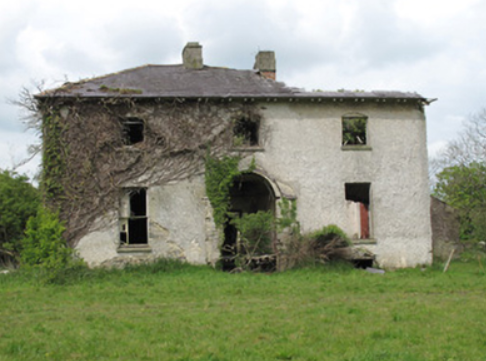
|
| Lisnaveane House | Home of the Waddell family, it is named on the 1st edition 6 inch Ordnance Survey map (1836) and possibly dates from the late 18th century. It was altered in the 19th century and the yard buildings were extensively extended. At the time of Griffith’s Valuation the buildings were valued at £16. William and Charles Waddell were recorded as the occupants holding the property in fee. Home of Alfred Waddell and family in the early 20th century. |
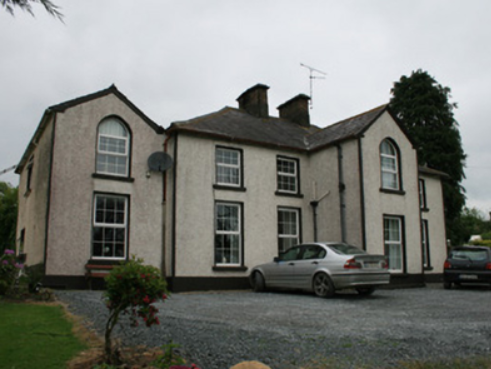
|
| Clover Hill | Another Waddell home, also named on the 1st edition 6 inch Ordnance Survey map (1836). It was occupied by William Waddell in the mid-19th century and held from Charles Waddell. The value of the buildings was £4.10.0. This house was the home of Alexander Waddell and family in the early 20th century. |
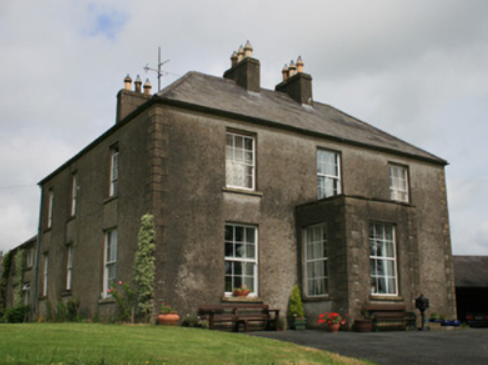
|
| Drummaconor | A building is marked at this site on the 1st edition 6 inch Ordnance Survey Map (1836) and named on the 25 inch map (surveyed in 1908). In the mid-19th century the house was occupied by John Fawcett who held the property in fee. The buildings were valued at £12. It was at a Halloween ball in this house in 1871 that the dresses of two daughters of Sir William Wilde caught fire causing their deaths a few days later. The ball was hosted by a local bank manager Mr Reid. James Treanor and his family were resident in the early 20th century. He was a farmer and local magistrate. This house is still extant and has functioned as a guest house. For photo circa 1905, see https://madaboutmonaghan.ie/kilmore-and-drumsnatt | |
| Corfad | Built in 1828, according to the Ordnance Survey Field Name Book, this two storey house was the residence of ‘Mr McCullough an extensive farmer’. Griffith’s Valuation records James McCullagh as the occupier who held the property which included offices, corn and flax mills, in fee. The buildings were valued at £42. This house is now a ruin. |
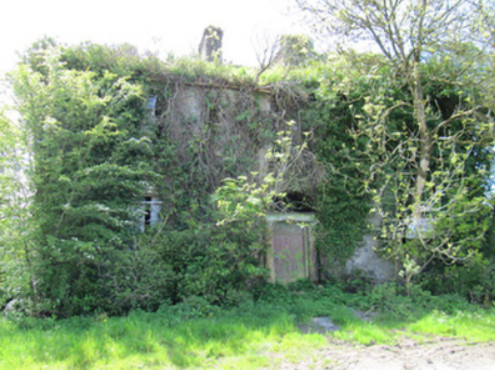
|
| Ashfield | This house located on the Barrett-Lennard estate is marked on the 1st edition 6 inch Ordnance Survey map. James G. Smyth of Ashfield, Clones, was a subscriber to Lewis ‘Topographical Dictionary’ in the 1830s. Valued at £10 Jane Smith was the occupier at the time of Griffith’s Valuation. A house is still located at this site. | |
| Drumcru | A building was located at this site on the Barrett-Lennard estate at the time of the 1st edition Ordnance Survey map (1836). Griffith’s Valuation records the house valued at £11 and occupied by Mary Renwick. A house surrounded by a complex of outbuildings is still located at this site. | |
| Scarvy House | Scarvy was the home of Major Campbell Graham in the 1830s. About this time the original house, which is marked on the 1st edition 6 inch Ordnance Survey Map (1836), was replaced by a new one. The Ordnance Survey Field Name Book records ‘Near the centre of the townland there is a good house with large orchards, gardens etc belonging to the proprietor but it is going to be replaced by a larger one near the same spot which is now building.’ By about 1860 the buildings were valued at £38 and held by Lydia Campbell from Thomas de Burgh. Occupied by the Duggan farming family in 1901. Not occupied in 1911 but still held by Colonel de Burgh. |
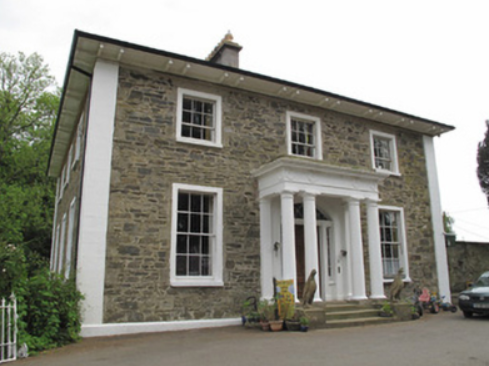
|
| Fairfield | Fairfield was the birthplace of the Reverend John Richard Darley in 1799 who became Bishop of Kilmore in 1874. Facing the shore of Inner Lough it is named on the 1st edition 6 inch Ordnance Survey Map (1836). The Field Name Book states that it was the property of Lord Cremorne let to the former proprietor Mr Corry. Griffith’s Valuation records Lord Cremorne as the occupier holding it in fee. The buildings were valued at £23. By the early 20th century this house was no longer in use. The site is now surrounded by a forest. | |
| Glenburne Cottage | Located on the outskirts of the village of Rockcorry on the Cremorne estate, Samuel Lewis in the 1830s refers to ‘Glenburie Park’ as the residence of C. Stewart Corry. Rebecca Murray was the occupant at the time of Griffith’s Valuation circa 1860 when the buildings were valued at £25. Home of the McFadden family in the early 20th century, no longer extant. | |
| Killycoonagh House | Killycoonagh, located on the Forster of Ballynure estate, is marked but not named on the 1st edition 6 inch Ordnance Survey Map (1836). The Ordnance Survey Field Name Book records the house as the residence of the sister of the proprietor Forster of Ballynure. By about 1860 the buildings were valued at £20 and the occupant was Anne Forster. It appears to have been still in the possession of the Forster family in the first part of the 20th century, although it may have been leased out. |
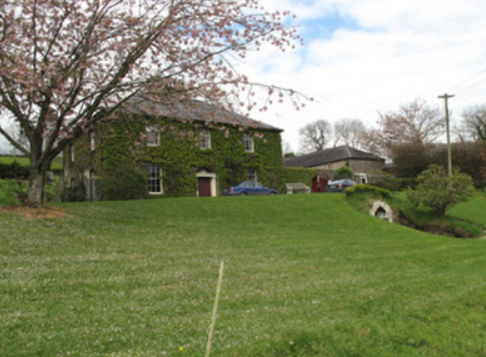
|
| Anlore Cottage | In the mid-19th century Anlore Cottage, in the village of Anlore, was occupied by Jason Crawford and valued at £10. It was held from William Forster. A building is still located at this site. | |
| New Park | A house named on the 1st edition 6 inch Ordnance Survey Map (1836), it was occupied by Dacre Hamilton in the 1830s. Home of Thomas Atkinson in the 1850s, valued at £10 and held from Mary Elizabeth and Charlotte O’Brien. Home of the Carleton family in the early 20th century. | |
| Forest View | This house is named on the 1st edition 6 inch Ordnance Survey Map (1836). In the mid-19th century it was occupied by Thomas Dawson and held from Lord Cremorne. The buildings were valued at £12. Partial remains are still visible at this site. | |
| Camla | Described by Bence Jones as a late Georgian house of one storey over a high basement, situated close to Rossmore Park. Lewis records Lieutenant Colonel Henry Westenra as resident. He left the property to his nephew the 3rd Baron Rossmore. At the time of Griffith’s Valuation occupied by Jesse Lloyd, Lord Rossmore’s brother-in-law, who soon moved to another Rossmore property nearby, Ballyleck House. The buildings were valued at £85 and a steward’s house was also located in this townland. By 1906, the buildings at Camla were valued at £55 with 118 acres of untenanted land. Occupied by James Pollock, land steward in 1901 and Fred Millard, estate agent, in 1911. Camla became the home of the 6th Lord Rossmore after World War II. It was sold in 1962. The building has been demolished and the site is now a green field. | |
| Annaghmakerrig | Annaghmakerrig, now the Tyrone Guthrie Centre, was built in the first decade of the 19th century on the site of a house known as Leesborough, which was the home of the Lee family in the 18th century. In 1802, the property was leased in perpetuity to Dr John Moorhead, a local doctor. Eventually inherited by Martha Moorhead, who married William Power in 1859. William, the son of Tyrone Power, a well-known Irish actor, was knighted in 1865. In 1906, Sir William J.T. Power occupied the mansion house with a rateable valuation of £86.10s. One of William and Martha’s daughters, Norah Power, was the mother of Tyrone Guthrie and it was through his mother that Tyrone inherited Annaghmakerrig. When he died in 1971 he left the house to the Irish State for the benefit of artists, see http://www.tyroneguthrie.ie/about/centre. |
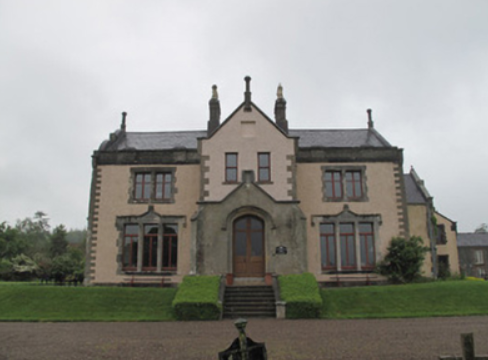
|
| Bowelk | This house is not marked on the first edition 6 inch Ordnance Survey map but is recorded in Griffith’s Valuation when it was occupied by William H. Jackson, a member of a family who had extensive linen manufacturing and corn milling interests in the neighbourhood. It remained in the possession of the Jackson family until the 1920s. Advertised for sale in the Sunday Times on 5 June 2011 after renovation. |
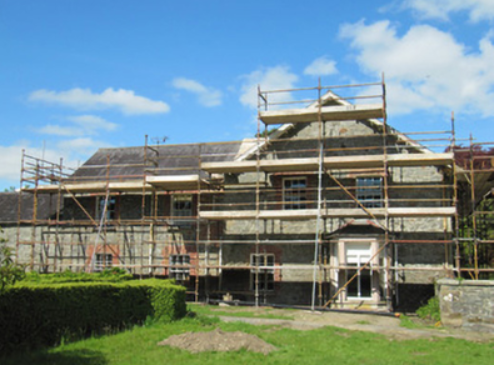
|
| Fairview | Part of this house, situated on the Verner estate, dates from the late 18th century. Fairview is named on the first edition 6 inch Ordnance Survey map. The building was only valued at £4 in Griffith’s Valuation, when it was occupied by William Lockart. It was considerably added to sometime in the mid-19th century. James Lockart occupied the house in 1910 (Ulster Towns Directory 1910). |
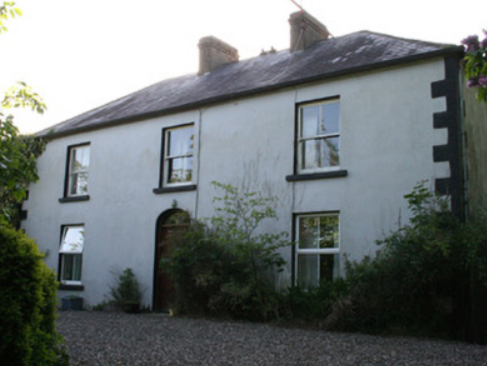
|
| Cumry | Built post 1838, this house was valued at £10 at the time of Griffith’s Valuation and was occupied by John Mullen who held it from Lord Cremorne. A house still exists at this site. | |
| Cumry Lodge | Marked on the first edition 6 inch Ordnance Survey map, this house with a rateable valuation of £12, was occupied by the Reverend John Morell in the mid-19th century and by the Reverend James Morell in 1910 (Ulster Towns Directory 1910). The Morells were Presbyterian ministers in Ballybay, see http://treasureyourexceptions.com/morell.html The property was held from Lord Cremorne. |

|
| Drumbrean Cottage | A late 18th century building, still in use as a residence. Possibly used as a manse house in the mid-19th century when it was the occupied by the Reverend Richard Ross, who held it from the Murray Ker family. |

|
| Minore | Named on the 1st edition 6 inch Ordnance Survey map (1836), Lewis records Minore as the residence of Captain ‘Cottnam’. The Encumbered Estates sale rental of 2 June 1853 states that the house was erected by Thomas Cottnam, deceased. The owner at the time of the sale was Mrs Grace Cottnam, widow and she was entitled to a jointure out of the lands. The petitioners were Rutherfords and Brunkers. By the time of Griffith’s Valuation it was occupied by Thomas Leary who held it from Dr Brunker. Home of Hester Parkhill in 1901 and of the Reverend Thomas Brennan, parish priest, in 1911. In more recent times the home of the Clegg family. | |
| Dartrey House/Dawson's Grove | Dawson Grove, later known as Dartrey House, is marked on the 1st edition 6 inch Ordnance Survey Map (1836). It was built about 1770. Lewis refers to it as a ‘noble mansion’. In 1846, the 3rd Lord Cremorne/1st Earl of Dartrey replaced this house with a large Elizabethan-Revival mansion designed by William Burn. A fire in 1856 destroyed part of the house. At the time of Griffith’s Valuation, circa 1860, the buildings were valued at £105 and still valued at the same in 1906. The family honours became extinct in 1933 following the death of the 3rd Earl and the house was demolished in 1946. |

|
| Dromore Lodge | A house situated on the Cremorne estate, close to Dawson’s Grove and almost on the border with county Cavan. The house is named on the 1st edition 6 inch Ordnance Survey Map (1836). It was occupied in the 1830s by Lieutenant Dawson of the Royal Navy. The building was reduced in size by the time of Griffith’s Valuation when it was rated at £6.10.0. John West Finlay was resident. By the early 20th century it has become the home of the gamekeeper on the Dartrey estate. A building is still located at this site. | |
| Lake View (Ematris) | This house looks out on Long Lough. It was occupied by William Richey and valued at £10, circa 1860. Home of the Gillespie family in the early 20th century. |
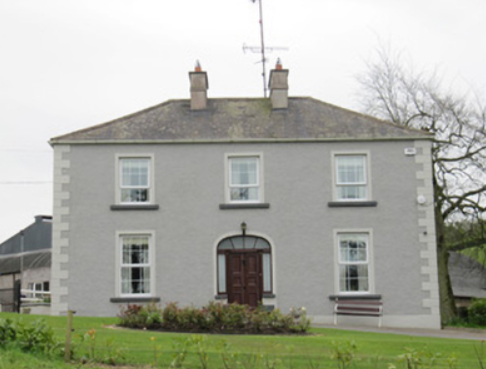
|
| Gortgranard | This house is marked on the 1st edition 6 inch Ordnance Survey Map (1836) and is named on the 25 inch map (surveyed in 1908). It was the home of the Campbell family, Lewis records Mrs Graham as proprietor. The Ordnance Survey Field Name Book describes the residence of Mrs Graham, widow of Captain Campbell Graham as a ‘good building with large orchards, gardens, out houses etc’. In the mid-19th century it was valued at £20 and held by Samuel Campbell from Thomas de Burgh. Samuel Campbell of Gortgranagh died in 1879 and his wife Mary in 1913. Both are buried in Killeevan COI graveyard. Home of a farming family named Lee at the beginning of the 20th century. | |
| Lisalea | A house built after the first Ordnance Survey and before Griffith’s Valuation, when the buildings including herds’ houses were valued at £32. It was located on the estate of Andre M. Ker and Richard Wilson was the occupant. In 1901, George Fitzgerald was living in this house with his family as the caretaker for William Edward Ryan. This house is still maintained and occupied. |

|
| Aghnamallagh House | James A. Mayne lived in this house in the mid-19th century. He held it in fee and the buildings were valued at £22. This was the home of the Elliot family in the early 20th century. The house is still extant. see https://www.geograph.ie/photo/897268 | |
| Thornhill (Drumsnat) | John Johnston is described in the Ordnance Survey Field Name Book as the only gentleman resident in the parish. He lived at Thornhill. On 13 June June 1854, this house and a demesne of about 40 acres was for sale in the Encumbered Estates Court. The owners and petitioners were Mary Johnson, widow, Maria and Jane Johnson and Martha Dudgeon, formerly Johnson. The property was held under a lease (1738) for 999 years. By the time of Griffith’s Valuation Robert Thomson was the occupant holding the property from Owen B. Cole & Olivia Lucas. The buildings were valued at £25. Home of Felix P. Smith and family in 1911. |

|
| Dunraymond | This house with extensive outbuildings and walled garden is named on the 1st edition 6 inch Ordnance Survey Map (1836). Documents in PRONI (D991/1/A/3) record the interest of the Bartley family of nearby Bartley’s Grove in Dunraymond in the early 19th century. Described in the Ordnance Survey Field Name Book as having ‘been greatly improved of late both as to additions being made to the buildings and the formation of plantings’. By the time of Griffith’s Valuation David Ross was resident. He held the property from Newell Atkinson. The buildings were valued at £34. A large complex of farm buildings is now located at this site. | |
| Rossmore Park | Situated on an elevated site the original house was known as Cortolvin Hills. This is the name that appears on the 1st edition 6 inch Ordnance Survey map (1836) for the house. It was the home of the Westenra family, Barons Rossmore. In 1824, Richard Morrison produced plans to rebuild the house and by the end of the decade William Morrison had taken over from his father. Collins writes that the old house appears to have become the servants’ wing and that the new house had a Jacobean facade. Lewis refers to Rossmore Park as ‘a handsome mansion in the Elizabethan style’. It was remodelled in the late 1850s to the design of W.H. Lynn, after which, Bence Jones writes, ‘the combined ranges boasted of at least 117 windows, of 53 different shapes and sizes’. The buildings were valued at £250 in Griffith’s Valuation and in 1906. During World War II the 6th Lord Rossmore moved from Rossmore Park to Camla House due to pervasive dry rot in the house. It was unroofed after the war and the ruin was demolished in the mid-1970s. | |
| Loughoony | An elongated building facing the lake of the same name and marked on the 1st edition Ordnance Survey map (1836). The National Inventory of Architectural Heritage dates this house to circa 1790 and describes it as having a multiple-bay two-storey return. The Ordnance Survey Field Name Book records it as a good dwelling house the residence of Mrs Murray, widow of a Counsellor who was drowned in the lake nearby. In the mid-19th century the buildings were valued at £20 and the house was inhabited by Andrew Clarke who held it from William Ritchie. Loughoony was the home of Samuel Condell and family at the beginning of the 20th century |
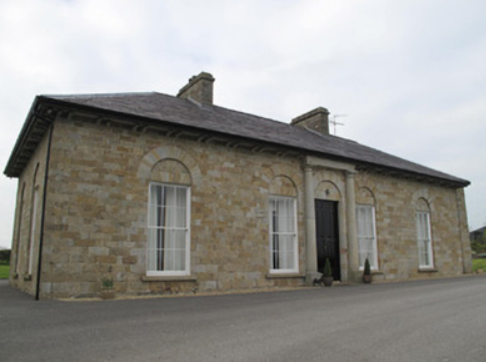
|
| Craig's Castle | This five bay two storied house was built on the Leslie estate in the late 18th century. Occupied by John Carlisle and valued at £14 at the time of Griffith’s Valuation. This house is still extant and known as Hillcrest. |
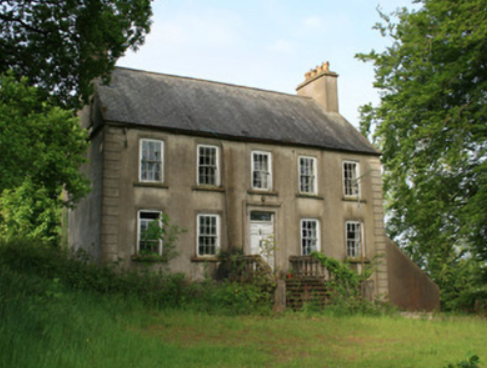
|
| Carrowbarra House | In 1798 ‘Carrowbarragh’ was associated with William Campbell an attorney-at-law who immigrated to Canada. In the 1830s Lewis records Carrowbarrow as the home of the Reverend Michael Fox Dudgeon who married Mary Moore of Moore Fort, Ballymoney, Co Antrim. Later he was vicar of Cratfield, Surrey. Henry Dudgeon occupied a house valued at £1.10.0. in Carrowbarra Island at the time of Griffith’s Valuation. He held the property from Owen B. Cole and Olivia Lucas. Owen B. Cole and Olivia Lucas were the lessor of the townlands of Carrowbarra and Carrowbarra Island. Mary Johnston occupied a house valued at £6 in Carrowbarra townland in the 1850s. A substantial house named Carrowbarra House is marked on the 25 inch map in Carrowbarra Island. | |
| Bushford | Humphry Thomson was living at Bushford in the mid-18th century. In 1814 Henry Thomson is described as resident at Bushford by Ambrose Leet. 'Robert Thompson' was the occupier holding the property in fee from the 1830s at least. The buildings had a rateable valuation of £5 at the time of Griffith's Valuation. [His son] Colonel Robert Thomson was resident in a new building on the other side of the road in the early 20th century. The new house (H657179) had a rateable valuation of £60 in 1906. His widow, Elizabeth Catherine, and her two daughters lived there in 1911. There were two substantial houses in Clossagh Beg by this time, one inhabited at the time of the censuses, by John Forster and later Joseph Ferris Forster and the other by the Thomsons. Walford's (1918) records Robert George Thomson, only son of Major Frith Thomson and nephew of Lieut. Col. Robert Thomson, died 1911, of Bushford. | |
| Bellamont Forest | A red brick house, designed by Sir Edward Lovett Pearce c 1728 for Thomas Coote, younger son of Richard, Baron of Collooney. Originally known as Coote Hill but its name changed in 1767 to Bellamont Forest following Charles Coote’s elevation to the title Earl of Bellamont (2nd creation). Bellamont Forest was inherited by Charles Johnston Coote in 1800. He was one of the illegitimate children of the Earl. Bellamont Forest was occupied by Richard Coote in the mid-19th century. He held it in fee and the buildings had a rateable valuation of £50.10.0. It was sold by George Coote in 1875 to Edward Smith (K.V. Mulligan), who made a fortune out of coal. Edward Patrick Dorman Smith was the eldest son of Edward Smith and his wife Isabella Cullen and succeeded to Bellamont Forest in 1880. In 1906, Captain E. P. Smith was the occupant of the mansion house with a rateable valuation of £61.5.0. The property remained in the hands of the Smith family until the 1980s when it was purchased by an Australian, John Coote, a descendant of the former owners who spent many years renovating the house. John Coote died in 2012 and the house was sold in 2015 to an American couple. |

